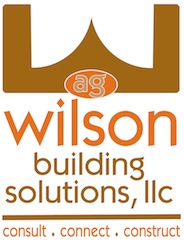Per Wikipedia – Galvannealed or galvanneal is the result from the combined process of galvanizing and annealing to produce specialized sheets of steel. The galvanization is made through the hot-dipping (Hot-dip galvanizing) process and gives a very fine greyish matte finish. Galvanneal does not flake off its galvanized coating when formed, stamped, and bent. The very fine matte finish acts like a primer, allowing paint to adhere easily, and is very rust proof; only white to dark grey marks appear if it comes in contact with water. Galvanneal sheets offer good paintability, weldability, corrosion resistance, and formability. It is extensively used in the automotive, signage, electric equipment, and other industries requiring a metal with good paintability and long reliable service life. This steel process is produced by many steel mills and it is commonly referred by its trade name of Jet-Kote.
Mesker recently addressed this issue in a newsletter sent out to the architectural community. See what our very own Mike Mehaffy, AHC has to say about galvanneal:
Galvanized vs Galvanneal – What are they and when should we specify them.
To know what and where to specify these coatings first we must know what these terms are and what they mean for our finished product.Galvanized describes a process in which steel sheet is immersed in pure molten zinc at a temperature of approximately 850° Fahrenheit, which bonds the Zinc to the steel on the molecular level. The word “galvanize” comes from the galvanic protection that the zinc provides to steel when it is exposed to a corrosive environment. The zinc is not just a simple barrier coating it actually provides 3 types of protection to the base steel. Galvanneal: Galvanneal is the same process as galvanized but after the zinc coating is applied the steel is heated to approximately 1050°.
This additional heating makes more of the iron come out of the steel and mix with the zinc so that the top layer of galvanneal is 5-6% iron and harder than the top layer of galvanize. This is beneficial for a few reasons.
The additional iron in the top layer makes it better for welding.
The galvanneal will bond with paint better than the galvanize. In fact, galvanneal does not require a primer.
The galvanneal is harder than galvanized so it is not as easily scratched.
Barrier protection: When the zinc bonds with the steel it forms multiple layers with the first layer at the steel being the hardest. These hardened internal layers make the coating difficult to compromise.
Cathodic Protection: The electrochemical relationship between zinc and steel in the presence of an electrolyte like moisture means that if the galvanized coating is compromised down to the bare steel the electrons in the zinc will sacrifice themselves to prevent corrosion. A flash rust will occur at the surface but then the corrosion stops and overtime zinc from the top layer will flow into a cut up to 1/4″ wide in the coating to heal it.
Zinc Patina: The zinc patina is a hard thin film that forms on the galvanized coating when it reacts with the oxygen, moisture and carbon dioxide in the air. The zinc patina acts as a barrier for the galvanized coating and must wear off before the galvanized coating can begin to wear.
So how does this apply to steel doors and frames.
In the steel door industry there are typically 3 types of galvanize / galvanneal used for doors and frames.
The first being A40. This is a galvanneal coating of .40 oz. per square foot. This coating provides minimal protection.
The second being A60. This is a galvanneal coating of .60 oz. per square foot. The A60 coating has 50% more protective coating and 50% more protection than the A40 coating. This is the best all around for steel doors and frames. It is adequate thickness for good protection but is not so thick that it is hard to work or has a displeasing appearance. This coating would be used on all exterior doors and any interior doors that have contact with any excessive moisture.
The third being G90 galvanized. This is a galvanized coating that may tend to look rough even after finish painting. It is a very heavy coating and does give added protection over the A60 coating. This coating should be used in extremely corrosive environments like pool areas or areas that come into contact with salt.
So when specifying Hollow Metal Doors and Frames don’t forget to include the proper coating for the application.
Thank You, Michael Mehaffy, AHC



1 ping